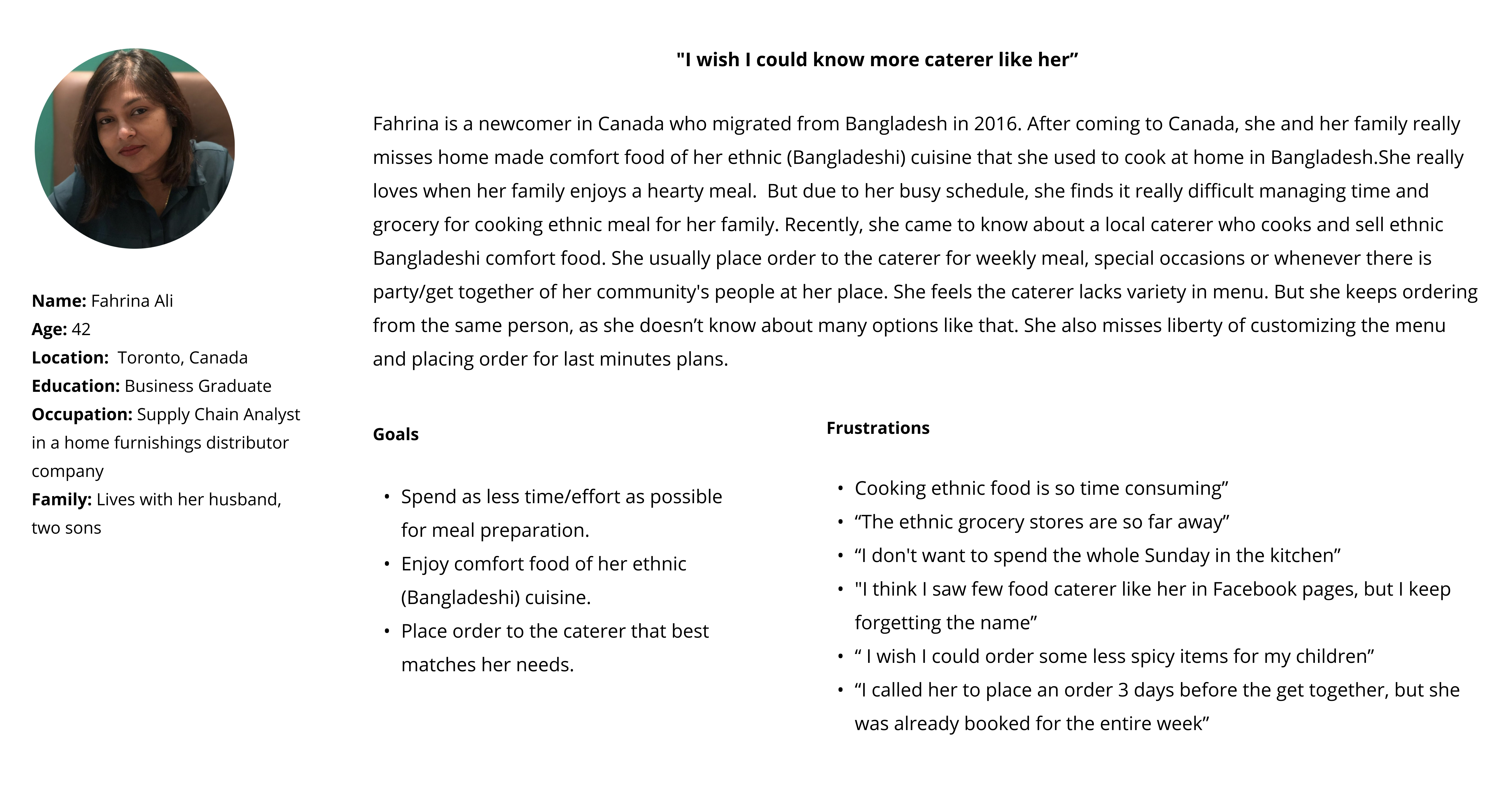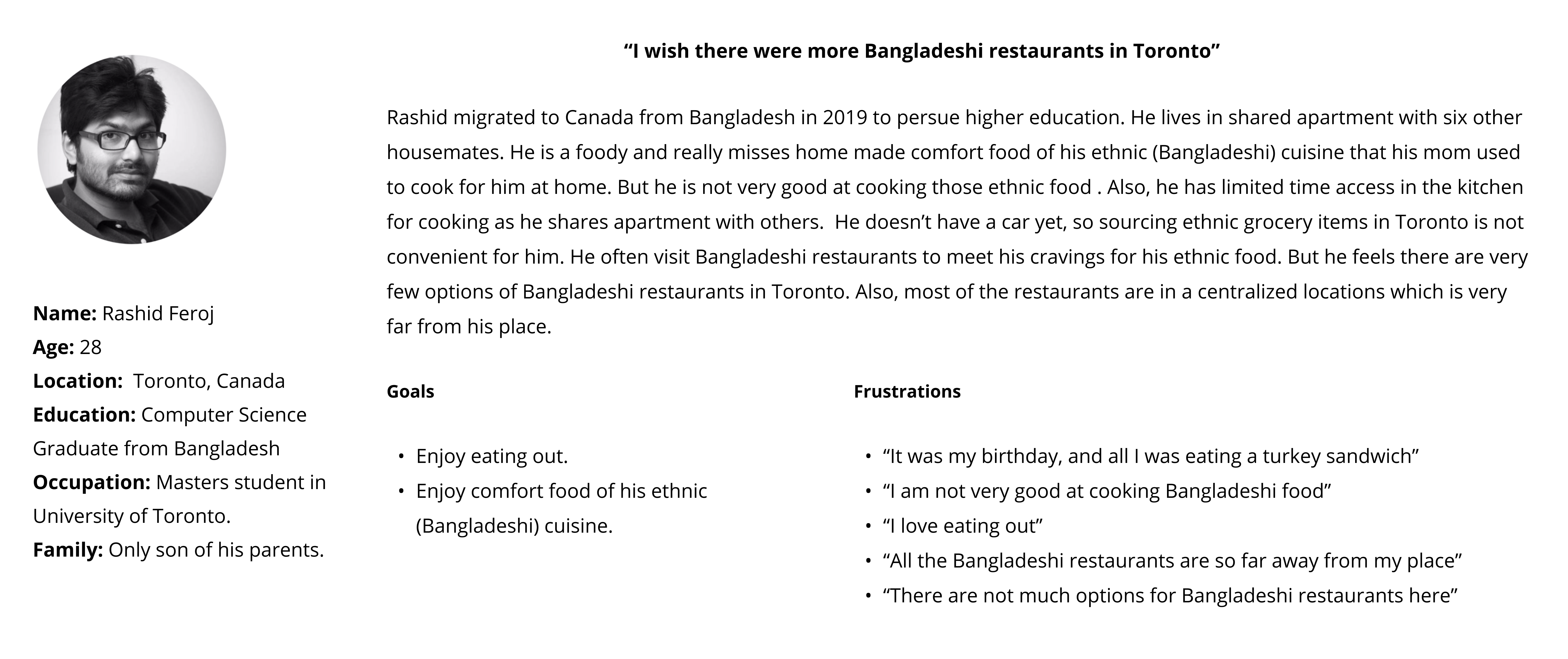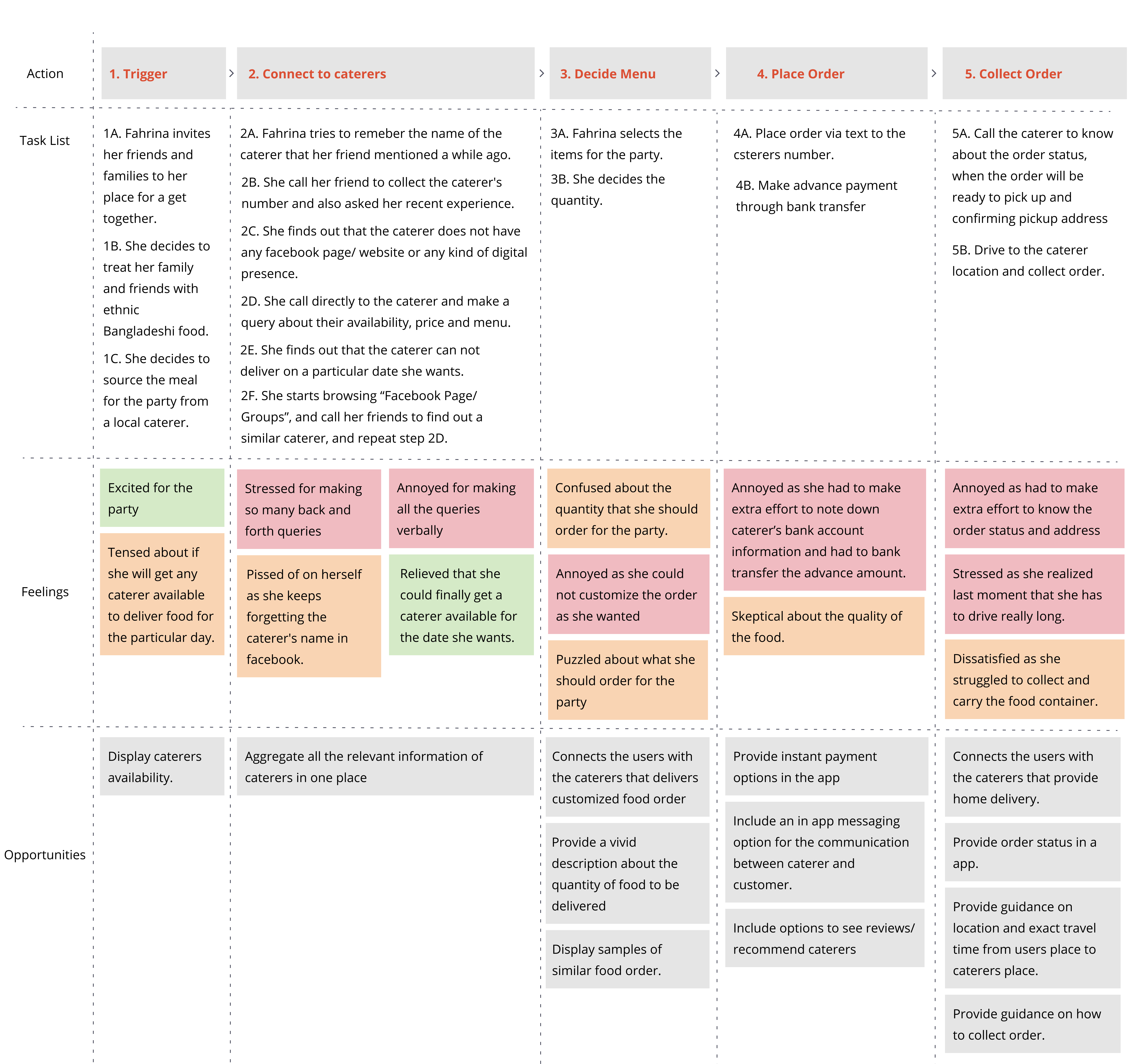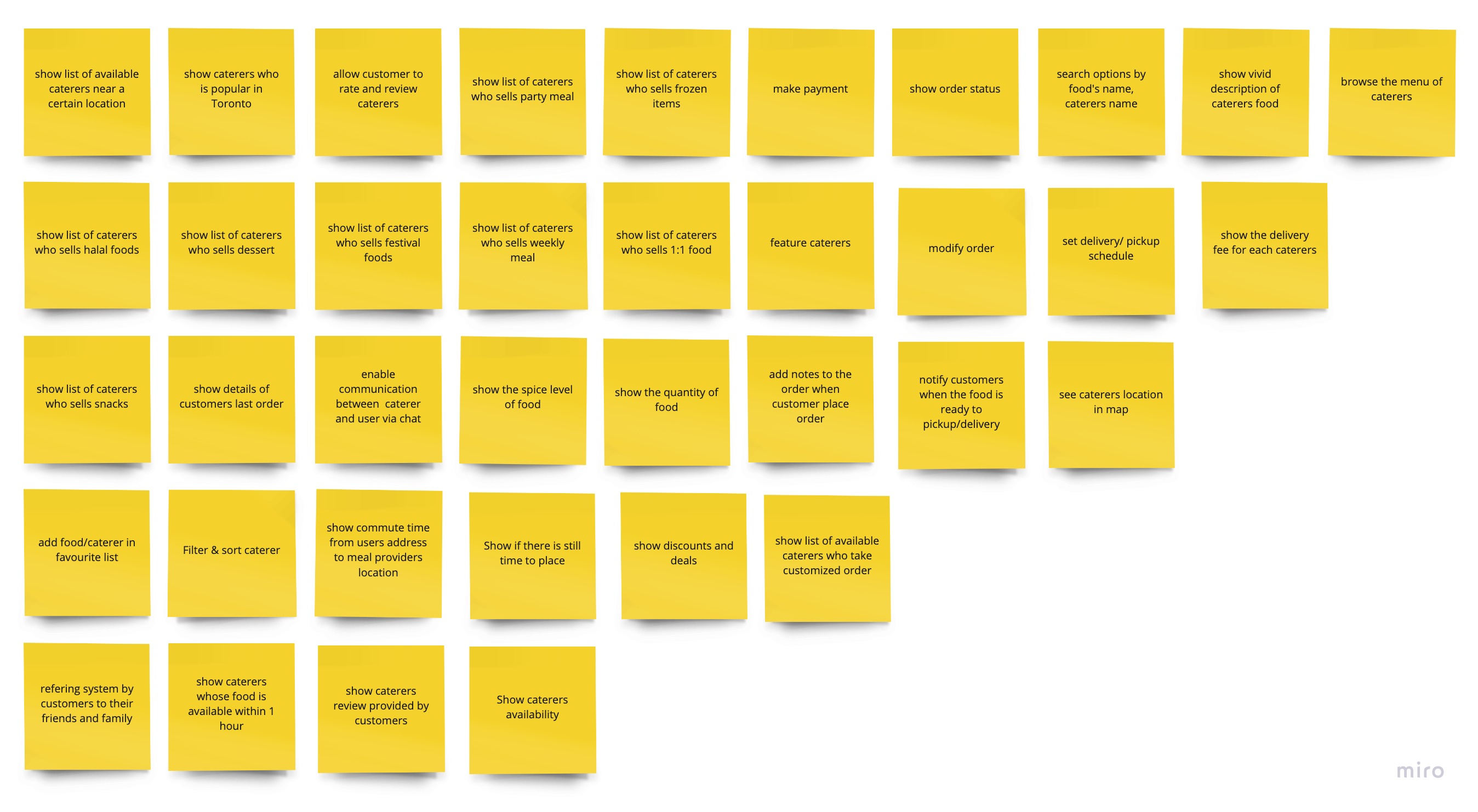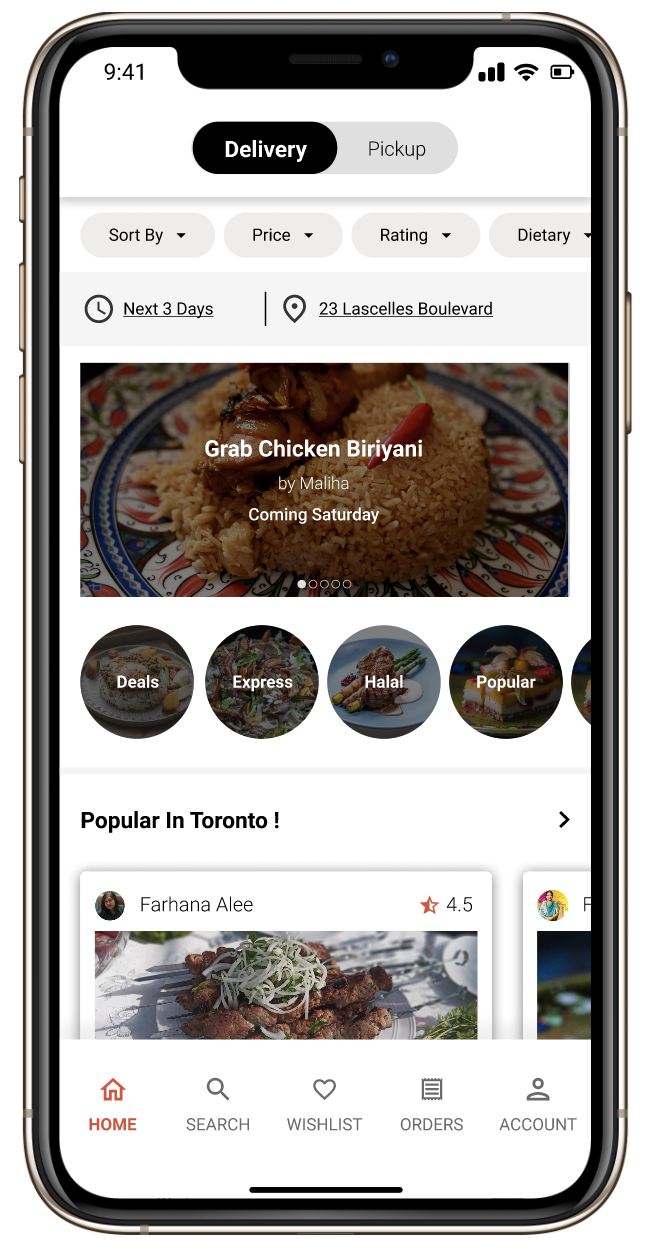Design Process
Since I followed "Design Thinking" framework, I started things off by interviewing 6 people in Toronto who have migrated from Bangladesh. At the beginning of this project, I was un-sure with what route to take. So, I used these interviews to gather basic insights about anything and everything about their food habit and identify common painpoints. Then I used few UX tools i.e. empathy map, persona, user jourey mapping to define the problem statement and also used those in the ideation phase to come up with solutions.

